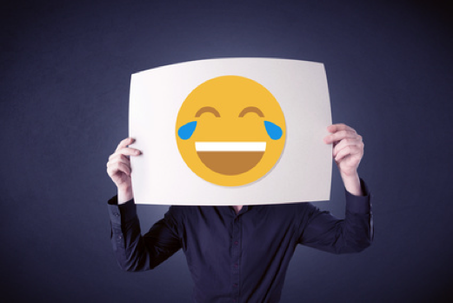 Laughter establishes closeness and conveys meaning. It sends micro-messages to our conversation partner via its length, tone, and accompanying facial expressions. “It does the work of establishing cohesion,” said Michelle McSweeney, a Columbia University researcher who studies digital communication. It indicates, “I feel comfortable enough around you to laugh.” Just as there are many variants on face-to-face laughter, there are many ways of laughing online (Tweet it!). For example: LOL – This is the classic acronym for “laughing out loud” of course. But, as digital communication expert Jessica Bennett writes in The New York Times, nowadays it “actually means the opposite, because nobody using LOL has really laughed out loud since at least 2015.” HAHAHA – Currently the rage, this mirthful triplet is what's often used to express – without irony – “I’m dying laughing.” HA – This monosyllable actually has nothing to do with humor, and is used instead to convey the skeptical sentiment, “Yeah, right.” haha? – This is reserved for that friend who texts you the inappropriate joke, when you are not sure if you’re supposed to laugh. ha ha ha (note the spaces) -- This indicates, Bennett says, “ what my 13-year-old self might have referred to as “hardy har har” — or, very funny — NOT.” Confused? There is always the emoji ha — which is “crying tears of laughter “and should not be confused with “crying tears of sadness” that is apparently the most common emoji on Instagram. What’s the way you indicate laughter online? Do you you use variations for nuance? To join the conversation, click "comments" above.
0 Comments
Your comment will be posted after it is approved.
Leave a Reply. |
Archives
July 2024
Categories
All
|
|
Glaser & Associates, Inc.
Executive Offices 1740 Craigmont Avenue, Eugene, OR 97405 541-343-7575 | 800-980-0321 [email protected] |
© 2019 Glaser & Associates. All Rights Reserved.


 RSS Feed
RSS Feed